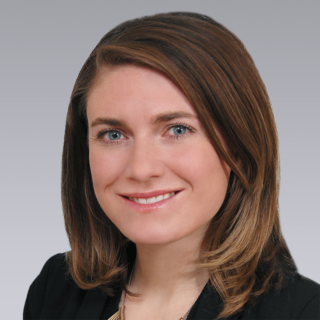The headline story for the U.S. office sales market in recent years has been one of investors showing a preference for suburban rather than Central Business District (CBD) assets, as they chase higher yields.
Suburban sales volume overtook CBD markets for the first time this cycle in Q4 2012 and the gap between the two remained modest through 2014, despite the fact that suburban markets have over twice the inventory of their downtown counterparts. During the four years from 2015 to 2018 however, just 41.2% of the total U.S. office sales volume of $562.9 billion was invested in CBD markets while 58.8% flowed to the suburbs. Looking at 2018, suburban office investment reached $83.4 billion (61.5% of total) while $52.2 billion was placed in CBD assets.

Despite this locational shift, the amount of capital invested in U.S. office properties has remained relatively stable. Average annual office sales volume from 2015 to 2018 was $140.7 billion per year, just slightly above the 2018 total of $135.6 billion.
This relative stability also holds true for capitalization rates (cap rates). Average U.S. office cap rates stood at 6.6% at Q4 2018—30 basis points below the Q4 2014 rate of 6.9%. During the same period, average CBD cap rates tightened from 5.7% to 5.4%, while those in the suburbs fell from 7.2% to 6.9%.
However, there has been an escalation in pricing. Average sales price per square foot for CBD assets was $412 per square foot for Q4 2018, representing an increase of 22% over the past four years. Suburban price growth over the same time period was stronger at 25.4%, compared with an average of $212 per square foot in Q4 2018. 
Does the shift to the suburbs mean that buyers have turned away from the high-profile, high-value gateway markets of Boston, Chicago, Los Angeles, New York, San Francisco and Washington, D.C.? Not so. Office sales volume in these markets in 2018 accounted for 53.4% of total activity at $72.1 billion, led by $25.6 billion in New York. More than three-quarters (76.5%) of cross-border capital placed in 2018 was in the gateway markets, reflecting their strategy of taking long-term positions on high-profile assets.
What’s happening at the transaction level, particularly at the top-end of the market? We analyzed the 100 largest (by value), single-asset trades that closed in 2018. The average sales price was $403 million ranging from $180 million to $2.4 billion for a total of $39.9 billion. Not surprisingly, given their higher pricing, the majority share of this activity by sales volume was in the gateway markets ($31.4 billion— 78.7% of total) and involved CBD assets ($30.8 billion—77.2% of total).
There were 21 transactions priced at $1,000 per square foot or higher. The only one to take place outside of the gateway markets was Pembroke Real Estates’ $388.4 million acquisition of 400 Fairview in the Seattle CBD—a market whose status and attractiveness is now approaching that of the top six.
Boston’s position as one the most dynamic major office markets in the U.S. from a demand and rental perspective, is also being reflected on the sales front. 10 of 2018’s 100 largest sales took place in Boston, eight of which were in the CBD. The average sales price of $924 per square foot and the average cap rate of 4.8%, were second only to Manhattan, where the comparable values were $994 per square foot and 4.5%, respectively.
Five of the top 100 transactions closed at a sub-4% cap rate, three of which were in the San Francisco Bay Area. Reflecting the strong demand for assets in the nation’s top performing office market, each one was in a different market within the Bay Area. These were led by Alphabet Inc.’s $1 billion acquisition of Britannia Shoreline Technology Park in Mountain View, San Jose at a 3.5% cap rate, followed by transactions in San Francisco and Oakland.
Tech-centric markets in general are in demand, with a series of major sales occurring in the leading secondary markets of Charlotte and Denver in 2018. Rising values reflect the interest in such markets. Average U.S. office sales price per square foot rose by 1.9% over the two years to Q4 2018. Put this in contrast to price growth of 16.5% in Austin, 11.8% in Charlotte and 17.6% in Denver over the same period.
Where to next?
While economic and real estate prospects over the immediate term hold promise, investor bias toward the suburbs may start to shift as buyers look to lessen their risk once the market starts to cool. Provided that pricing does not over-heat, tech-led markets should continue to garner interest. Gateway markets should remain the domain of cross-border investors, but there may be increased reticence to bring trophy assets to market. Stricter lending criteria could dampen sales volumes in a cooling market but, barring an unforeseen major shock, chances of a severe market correction look unlikely, given the current outlook. Medical office assets could offer a means of diversification. Healthcare real estate is now an established asset class within the wider commercial real estate spectrum, generating $13 billion in sales volume in 2018.
Stephen is the National Director of Office Research for Colliers International, where he focuses on analyzing office property trends, compiling Colliers’ thought leadership and delivering timely market projections to provide clients with a leading edge in our industry.

 U.S. National Research
U.S. National Research
 Sheena Gohil
Sheena Gohil Bob Shanahan
Bob Shanahan Dougal Jeppe
Dougal Jeppe Kai Shane
Kai Shane
 Bret Swango, CFA
Bret Swango, CFA Michelle Cleverdon
Michelle Cleverdon
 Aaron Jodka
Aaron Jodka